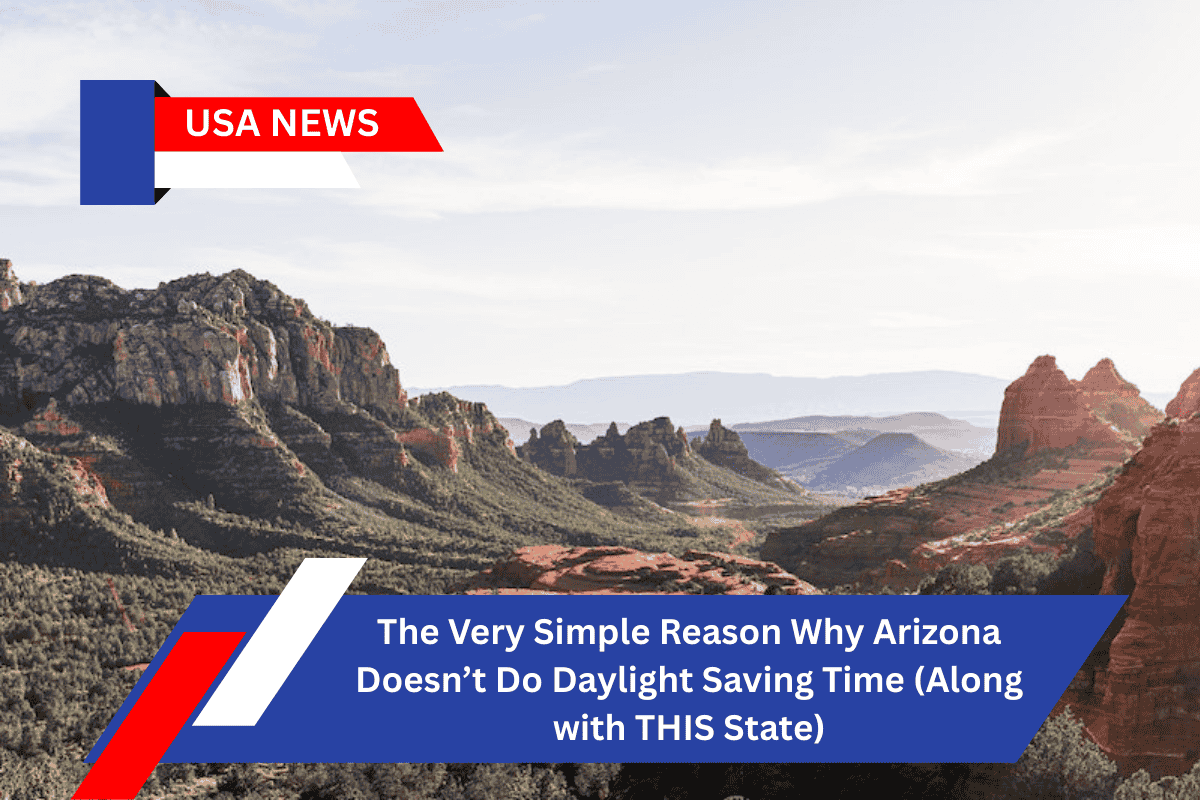Every year, most Americans go through the same routine: move the clocks forward in spring and back again in fall. But not everyone joins in. If you’ve ever lived in Arizona or made travel plans there, you’ve probably noticed something strange — the state doesn’t observe Daylight Saving Time (DST).
While the rest of the country is “springing forward” or “falling back,” Arizona just stays the same. And there’s actually a very simple reason why — and one other state that follows the same path.
Arizona’s Simple Reason: It’s Just Too Hot
The main reason Arizona doesn’t follow Daylight Saving Time is basic: to avoid even hotter evenings.
Arizona is already one of the hottest states in the U.S., especially during summer. If the clocks were moved forward an hour, sunset would come later — around 9 p.m. or even later in places like Phoenix and Tucson. That means more time in the day’s hottest temperatures.
By staying on standard time all year, Arizonans get cooler evenings a little earlier. This makes outdoor activities like walking, gardening, or even just driving more bearable. In short, it’s a way to escape the heat — or at least try to.
A Bit of History Behind the Choice
Daylight Saving Time became more common in the U.S. during World War I and again during World War II, mainly to save energy. In 1966, Congress passed the Uniform Time Act, which made DST official across the country — but gave states the option to opt out.
Arizona made the decision in 1968 to stay on Mountain Standard Time year-round. The main push came from residents who didn’t want to deal with longer, hotter days. And that decision still stands today.
The only exception in the state? The Navajo Nation, which does observe DST, even though it lies within Arizona. That means parts of Arizona do change time — but most of the state does not.
The Other State That Skips Daylight Saving: Hawaii
Arizona isn’t alone. Hawaii also doesn’t observe DST — and for an equally simple reason.
Located closer to the equator, Hawaii gets roughly the same amount of daylight year-round. The time shift just doesn’t make much of a difference there. So in 1967, just a year after the Uniform Time Act was passed, Hawaii opted out of Daylight Saving Time completely.
So What Happens When You Travel to Arizona or Hawaii?
If you’re traveling to Arizona or Hawaii during Daylight Saving Time (roughly March to November), here’s how time works:
Arizona stays on Mountain Standard Time (MST), so it lines up with Pacific Daylight Time (PDT) during that period.
Hawaii is two hours behind Pacific Time during DST.
This can cause some confusion when setting up meetings, flights, or digital calendars, especially if you’re coming from a state that does observe DST.
While most of the U.S. continues the twice-a-year clock change, Arizona and Hawaii have kept things simple. For Arizona, it’s all about avoiding more time in the brutal heat.
For Hawaii, it’s because the time shift makes no real difference. So next time you find yourself scratching your head over Arizona’s time zone, just remember: when it’s already 110°F by noon, no one wants the sun sticking around any longer than it has to.
SOURCES
- (https://www.britannica.com/story/why-doesnt-arizona-observe-daylight-saving-time)
- (https://www.cbsnews.com/news/states-without-daylight-saving-time/)
- (https://www.library.pima.gov/content/daylight-saving-time-tucson-and-arizona/)
